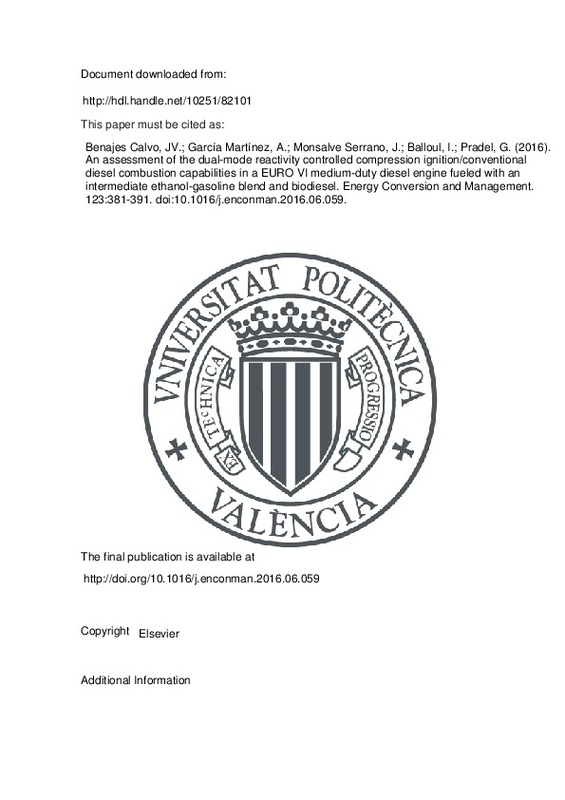JavaScript is disabled for your browser. Some features of this site may not work without it.
Buscar en RiuNet
Listar
Mi cuenta
Estadísticas
Ayuda RiuNet
Admin. UPV
An assessment of the dual-mode reactivity controlled compression ignition/conventional diesel combustion capabilities in a EURO VI medium-duty diesel engine fueled with an intermediate ethanol-gasoline blend and biodiesel
Mostrar el registro sencillo del ítem
Ficheros en el ítem
| dc.contributor.author | Benajes Calvo, Jesus Vicente
|
es_ES |
| dc.contributor.author | García Martínez, Antonio
|
es_ES |
| dc.contributor.author | Monsalve Serrano, Javier
|
es_ES |
| dc.contributor.author | Balloul, Iyad
|
es_ES |
| dc.contributor.author | Pradel, Gerard
|
es_ES |
| dc.date.accessioned | 2017-05-31T11:54:09Z | |
| dc.date.available | 2017-05-31T11:54:09Z | |
| dc.date.issued | 2016-09-01 | |
| dc.identifier.issn | 0196-8904 | |
| dc.identifier.uri | http://hdl.handle.net/10251/82101 | |
| dc.description.abstract | This work investigates the capabilities of the dual-mode reactivity controlled compression ignition/conventional diesel combustion engine operation to cover the full operating range of a EURO VI medium-duty diesel engine with compression ratio of 17.5:1. This concept is based on covering all the engine map switching between the reactivity controlled compression ignition and the conventional diesel, combustion operating modes. Specifically, the benefits of reactivity controlled compression ignition combustion are exploited whenever possible according to certain restrictions, while the conventional diesel combustion operation is used to cover the zones of the engine map in which the reactivity controlled compression ignition operation is limited. The experiments were conducted using a single-cylinder research diesel engine derived from the multi-cylinder production engine. In addition, considering the mandatory presence of biofuels in the future context of road transport and the ability of ethanol to be blended with gasoline, the low reactivity fuel used in the study is a blend of 20% ethanol by volume with 80% of 95 octane number gasoline. Moreover, a diesel containing 7% of biodiesel has been used as high reactivity fuel. Firstly, a reactivity controlled compression ignition mapping is performed to check the operational limits of the concept in this engine platform. Later, based on the results, the potential of the dual-mode concept is discussed. Results suggest that, under the constraints imposed, reactivity controlled compression ignition combustion can be utilized between 25% and 35% load. In this region of the map, reactivity controlled compression ignition can provide up to 2% increased gross indicated efficiency than conventional diesel combustion, but led to lower efficiency at low engine speeds. In addition, it was demonstrated that the regeneration periods of the diesel particulate filter during dual-mode operation can be reduced more than twice, which entails a great reduction of the diesel fuel amount injected in the exhaust line. | es_ES |
| dc.description.sponsorship | The authors acknowledge VOLVO Group Trucks Technology for supporting this research. The author J. Monsalve-Serrano thanks the Universitat Politecnica de Valencia for his predoctoral contract (FPI-S2-2015-1531), which is included within the framework of Programa de Apoyo para la Investigacitin y Desarrollo (PAID). Additionally, the authors also wish to thank Gabriel Alcantarilla from CMT - Motores Termicos for his technical work in adapting the test cell. | en_EN |
| dc.language | Inglés | es_ES |
| dc.publisher | Elsevier | es_ES |
| dc.relation.ispartof | Energy Conversion and Management | es_ES |
| dc.rights | Reserva de todos los derechos | es_ES |
| dc.subject | Reactivity controlled compression ignition | es_ES |
| dc.subject | Dual-fuel combustion | es_ES |
| dc.subject | Dual-mode operation | es_ES |
| dc.subject | EURO VI emissions | es_ES |
| dc.subject | Biofuels | es_ES |
| dc.subject.classification | MAQUINAS Y MOTORES TERMICOS | es_ES |
| dc.title | An assessment of the dual-mode reactivity controlled compression ignition/conventional diesel combustion capabilities in a EURO VI medium-duty diesel engine fueled with an intermediate ethanol-gasoline blend and biodiesel | es_ES |
| dc.type | Artículo | es_ES |
| dc.identifier.doi | 10.1016/j.enconman.2016.06.059 | |
| dc.relation.projectID | info:eu-repo/grantAgreement/UPV//FPI-S2-2015-1531/ | es_ES |
| dc.rights.accessRights | Abierto | es_ES |
| dc.contributor.affiliation | Universitat Politècnica de València. Escuela Técnica Superior de Ingenieros Industriales - Escola Tècnica Superior d'Enginyers Industrials | es_ES |
| dc.contributor.affiliation | Universitat Politècnica de València. Escuela Técnica Superior de Ingeniería del Diseño - Escola Tècnica Superior d'Enginyeria del Disseny | es_ES |
| dc.contributor.affiliation | Universitat Politècnica de València. Instituto Universitario CMT-Motores Térmicos - Institut Universitari CMT-Motors Tèrmics | es_ES |
| dc.description.bibliographicCitation | Benajes Calvo, JV.; García Martínez, A.; Monsalve Serrano, J.; Balloul, I.; Pradel, G. (2016). An assessment of the dual-mode reactivity controlled compression ignition/conventional diesel combustion capabilities in a EURO VI medium-duty diesel engine fueled with an intermediate ethanol-gasoline blend and biodiesel. Energy Conversion and Management. 123:381-391. https://doi.org/10.1016/j.enconman.2016.06.059 | es_ES |
| dc.description.accrualMethod | S | es_ES |
| dc.relation.publisherversion | http://doi.org/10.1016/j.enconman.2016.06.059 | es_ES |
| dc.description.upvformatpinicio | 381 | es_ES |
| dc.description.upvformatpfin | 391 | es_ES |
| dc.type.version | info:eu-repo/semantics/publishedVersion | es_ES |
| dc.description.volume | 123 | es_ES |
| dc.relation.senia | 314793 | es_ES |
| dc.identifier.eissn | 1879-2227 | |
| dc.contributor.funder | Universitat Politècnica de València | es_ES |
| dc.contributor.funder | Volvo Group Trucks Technology | es_ES |







![[Cerrado]](/themes/UPV/images/candado.png)

